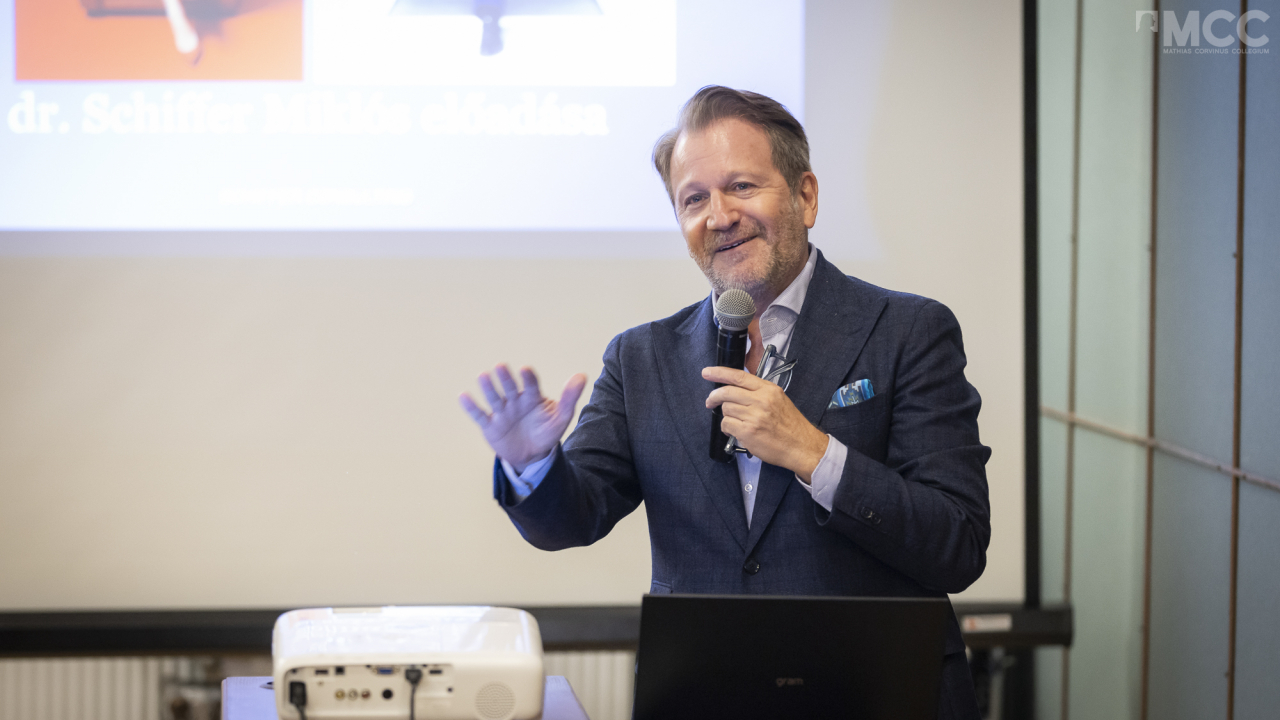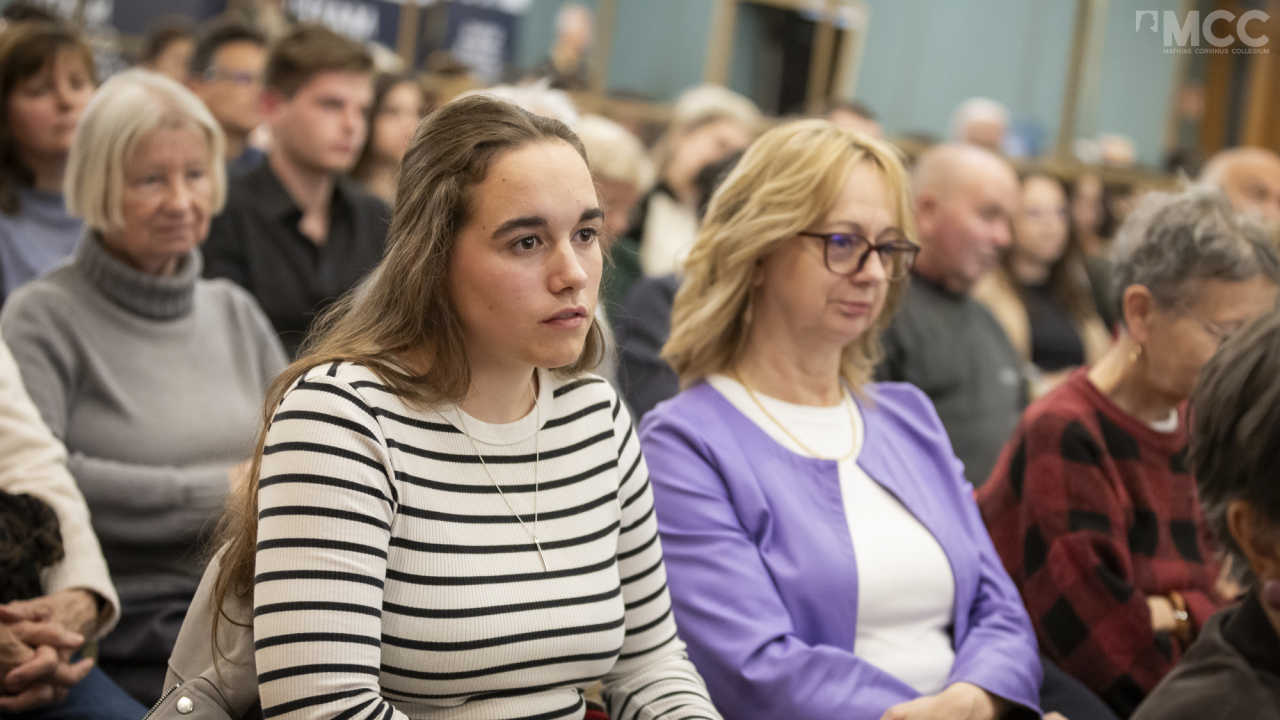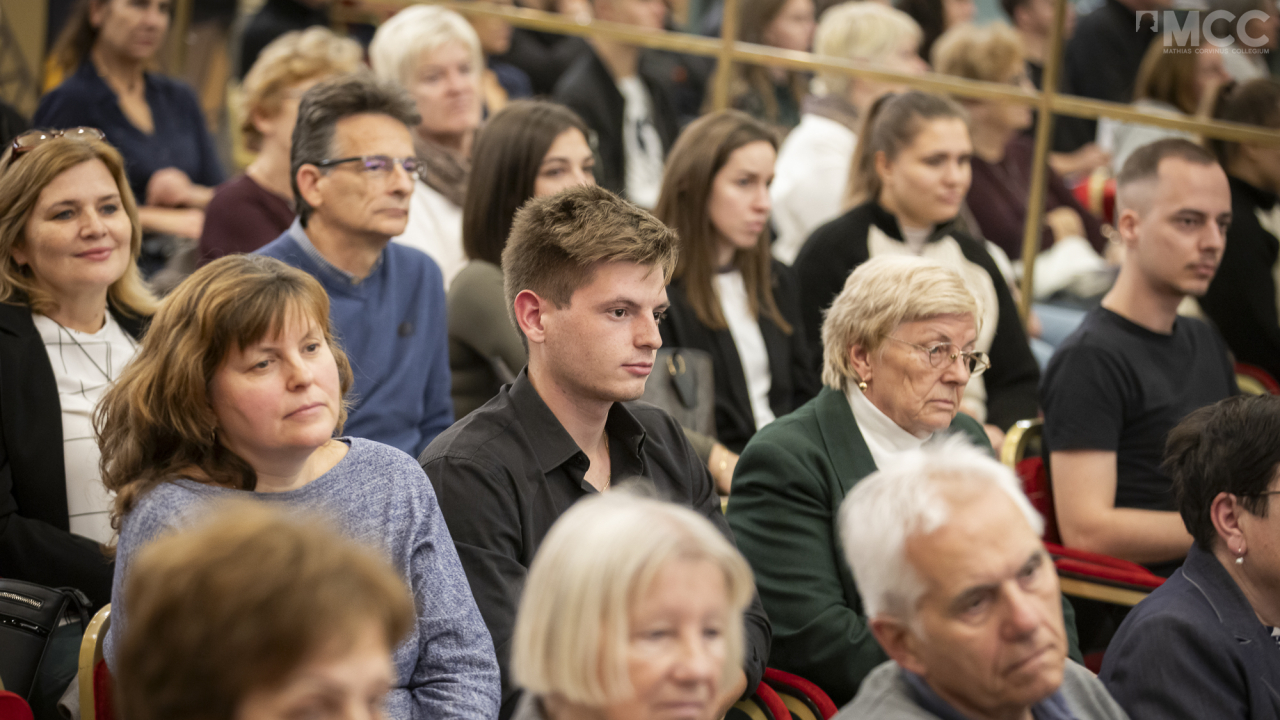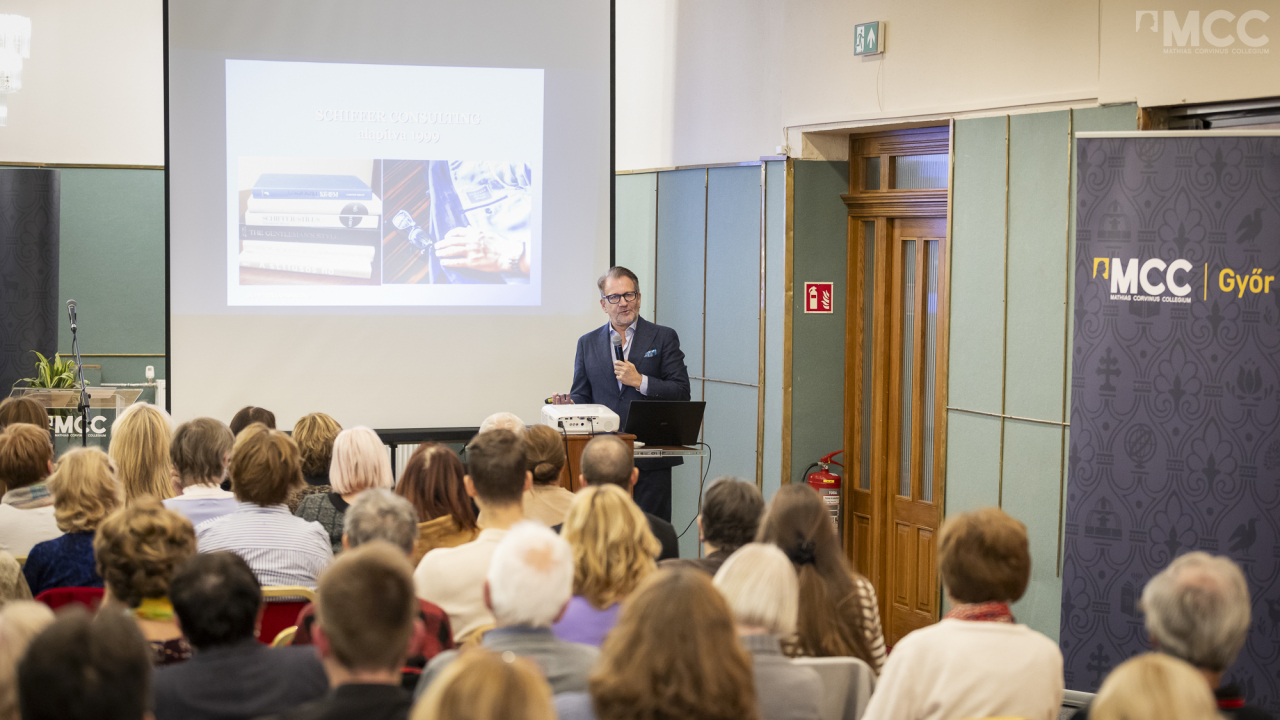Reading time: 2 minutes
Dress has always been important in terms of how they express themselves to their environment in everyday life. This is even more so in the world of politics, where dress is also part of official protocol. One must only think of the British royal dynasty or the leaders of certain countries, whose clothing and dress style is part of the appearance of the community they represent.
What is fashion and what is style? What is the main difference and connection between the two? How do politicians communicate with style, what political personalities and style versions do we meet, and how do they communicate in the world of politics through the way they dress? These were the questions on which Miklós Schiffer presented the basics of style and style trends in the world of politics to a packed house at MCC Győr on 25 October.
Miklós Schiffer explained that the main difference between fashion and style is quality. Style is what I build for myself, fashion is what the world wants to impose on me. Miklós Schiffer explained the basic pieces that are essential for every woman and man and the basic rules for combining them. The style expert shed light on the thin line between business, business casual, smart casual and casual "dress code" and stressed that nowadays neither age nor body type sets the limits for style. Building style requires hard work and awareness. According to Miklós Schiffer, over-supply in the market can make us fall into the temptation of shopping, where we often forget the basic rules of dressing.
In terms of political style, the style expert explained that both in the West and in the East, there is a long tradition and a significant role for dress in politics. This is less the case in the Central European region, which is probably a legacy of socialism. Miklós Schiffer cited the British royal court as a good example, from which he gave a detailed account of the dress code protocol of the recently deceased Elizabeth II. The Queen always used her hat and handbag to send a message to the outside world and to indicate to her entourage which people she planned to talk to for how long. As well as the royal family, another Western example cited by the expert was the current US presidential administration, where presidential attire also has a significant diplomatic role and protocol message. From the Eastern world, he looked at Russian and Chinese leaders, who also place great emphasis on communicating through their own clothing.





